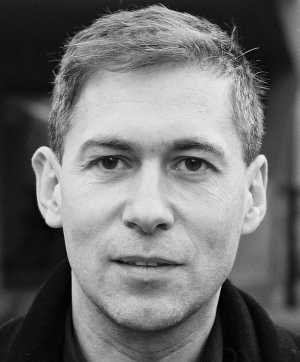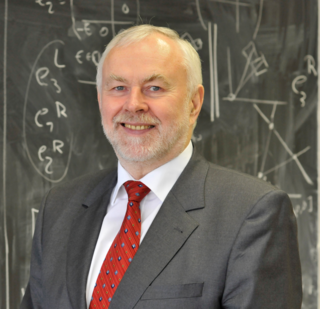
The Deutsches Wörterbuch, abbreviated DWB, is the largest and most comprehensive dictionary of the German language in existence. Encompassing modern High German vocabulary in use since 1450, it also includes loanwords adopted from other languages into German. Entries cover the etymology, meanings, attested forms, synonyms, usage peculiarities, and regional differences of words found throughout the German speaking world. The dictionary's historical linguistics approach, illuminated by examples from primary source documents, makes it to German what the Oxford English Dictionary is to English. The first completed DWB lists over 330,000 headwords in 67,000 print columns spanning 32 volumes.

The Bavarian Academy of Sciences and Humanities is an independent public institution, located in Munich. It appoints scholars whose research has contributed considerably to the increase of knowledge within their subject. The general goal of the academy is the promotion of interdisciplinary encounters and contacts and the cooperation of representatives of different subjects.

The Berlin-Brandenburg capital region is one of the most prolific centers of higher education and research in the world. It is the largest concentration of universities and colleges in Germany. The city has four public research universities and 27 private, professional and technical colleges (Hochschulen), offering a wide range of disciplines. Access to the German university system is tuition free.

The German Academy of Sciences at Berlin, German: Deutsche Akademie der Wissenschaften zu Berlin (DAW), in 1972 renamed the Academy of Sciences of the GDR, was the most eminent research institution of East Germany.

Hélène Esnault is a French and German mathematician, specializing in algebraic geometry.

The Royal Prussian Academy of Sciences was an academy established in Berlin, Germany on 11 July 1700, four years after the Prussian Academy of Arts, or "Arts Academy," to which "Berlin Academy" may also refer. In the 18th century, when French was the language of science and culture, it was a French-language institution.
Christiane D. Fellbaum is an American linguist and computational linguistics researcher who is Lecturer with Rank of Professor in the Program in Linguistics and the Computer Science Department at Princeton University. The co-developer of the WordNet project, she is also its current director.
The Wörterbuch der ägyptischen Sprache, abbreviated Wb in bibliographic references, is a large German-language dictionary of the Egyptian language published between 1926 and 1961 by Adolf Erman and Hermann Grapow. It is a comprehensive work encompassing 3000 years of linguistic history, including Old, Middle, and Late Egyptian as well as hieroglyphic inscriptions of the Classical Greco-Roman period. The dictionary contains approximately 16,000 headwords in five main volumes, two secondary volumes, and five volumes of primary source references. It is therefore the largest and most complete printed dictionary of Ancient Egyptian in existence.

Alessandra Buonanno is an Italian-American theoretical physicist and director at the Max Planck Institute for Gravitational Physics in Potsdam. She is the head of the "Astrophysical and Cosmological Relativity" department. She holds a research professorship at the University of Maryland, College Park, and honorary professorships at the Humboldt University in Berlin, and the University of Potsdam. She is a leading member of the LIGO Scientific Collaboration, which observed gravitational waves from a binary black-hole merger in 2015.

Kai A. Konrad is a German economist with his main research interest in public economics.
The Berlin-Brandenburg Academy Award by the Berlin-Brandenburg Academy of Sciences and Humanities is a annually science prize worth 30,000 euros. It is awarded to a "distinguished scientist whose research achievements have opened new and promising lines of research." The prize is given for outstanding scientific achievements in the fields of humanities and social sciences, mathematics and natural sciences, life sciences and medicine, and engineering sciences. The award ceremony coincides with a Leibniztag plenary lecture in commemoration of Gottfried Leibniz, in which the award winner describes his or her research.
Helmut Schwarz is a German organic chemist. He has been a professor of chemistry at the Technische Universität Berlin since 1978. In 2018, he was elected a foreign associate of the U.S. National Academy of Sciences.
The Thesaurus Linguae Aegyptiae is an online dictionary and text corpus of the Egyptian language developed by the Research Centre for Primary Sources of the Ancient World at the Berlin-Brandenburg Academy of Sciences and Humanities (BBAW) in Berlin, Germany. Intended to be a complete documentation of the Egyptian lexicon, it encompasses varied meanings of words in different texts over 3000 years of linguistic history. The dictionary is entirely based on primary source material, including inscriptions from temple walls, roads, tombs, papyri, and potsherds from religious, legal, administrative, and literary texts. The Thesaurus Linguae Aegyptiae is publicly available on the internet. It is a publication of two academy's projects at the Berlin-Brandenburg Academy of Sciences and Humanities and the Saxon Academy of Sciences and Humanities.

The Academy of Sciences and Literature is a scientific academy in Mainz, Germany. It was established in 1949 on an initiative of Alfred Döblin. The academy's goal is to support science and literature, and in doing so to help preserve and promote culture.
The Paul B. Baltes lecture is held annually by the Berlin-Brandenburg Academy of Sciences and Humanities. The lectures commenced in 2008 and are named after Paul Baltes, the German developmental psychologist.

Martin Grötschel is a German mathematician known for his research on combinatorial optimization, polyhedral combinatorics, and operations research. From 1991 to 2012 he was Vice President of the Zuse Institute Berlin (ZIB) and served from 2012 to 2015 as ZIB's President. From 2015 to 2020 he was President of the Berlin-Brandenburg Academy of Sciences and Humanities (BBAW).
Liselotte Richter was a German philosopher and theologian. She was the first female professor of philosophy in Germany.
Constance Scharff is a German zoologist and neuroethologist and Professor at the Free University of Berlin. She is particularly notable for her research on birdsong, neurogenesis and regeneration.
Wolfgang Klein is a German linguist and a founding director of the Max Planck Institute for Psycholinguistics. He's known for his contributions in language acquisition, text analysis and studies on the semantics of time and space.

The Leibniz-Sozietät der Wissenschaften zu Berlin is a German-speaking association of scientists founded in Berlin in 1993 in the legal form of a registered association. It is dedicated to interdisciplinary and transdisciplinary exchange and the discussion of fundamental problems in science and society. The association continues the activities of the Academy of Sciences of the GDR with personnel continuity.














